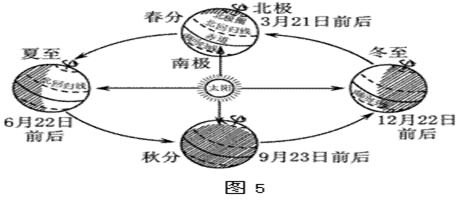问题
选择题
读地球公转示意图,回答问题

小题1:6月22日前后(夏至日),太阳直射在 ( )
A.赤道
B.极圈
C.北回归线
D.南回归线小题2:12月22日前后(冬至日),这一天福州市 ( )
A.昼夜相等
B.昼短夜长
C.昼长夜短
D.出现极夜现象
答案
小题1:C
小题2:B
本题主要考查的是地球运动的相关知识。
小题1:6月22日前后(夏至日),太阳直射在北回归线.
小题2:12月22日前后(冬至日),太阳直射南回归线,这一天福州市昼短夜长。
